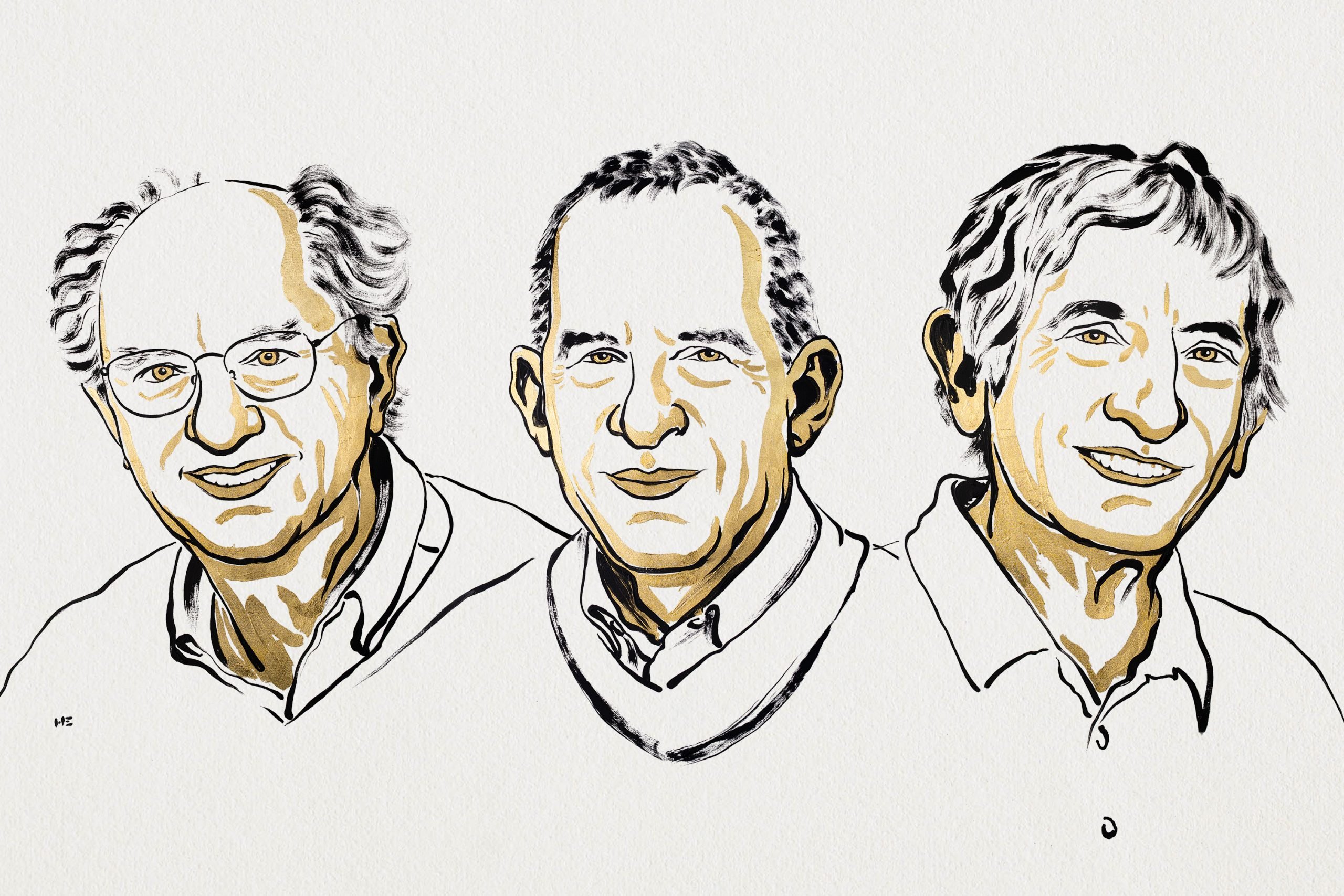Three physicists share Nobel Prize for breakthrough in quantum mechanics
A trio of physicists won the 2025 Nobel Prize in Physics for demonstrating quantum mechanics on a macroscopic scale.
Isabel Gil • October 7, 2025

John Clarke, Michel H. Devoret and John M. Martinis, winners of the Novel Prize in Physics 2025 [Credit: Niklas Elmehed | © Nobel Prize Outreach]
The 2025 Nobel Prize in Physics was awarded to John Clarke, Michael Devoret and John Martinis on Tuesday for demonstrating quantum mechanics — the study of how atoms and even smaller particles behave — on a large scale.
“[The laureates] used a series of experiments to demonstrate that the bizarre properties of the quantum world can be made concrete in a system big enough to be held in the hand,” read a press release from the Royal Swedish Academy of Sciences.
The laureates’ discovery paved the way to model quantum physics on electric chips, create artificial atoms and lay the groundwork for continued research into the construction of ultra powerful problem-solving quantum computers, said Göran Johansson, a member of the 2025 Nobel Committee for Physics.
“Now it’s clear that this really inspired so much work and opened up our horizons so much, that it’s really for the best of mankind,” said Johansson.
Currently, Clarke is a physics professor at the University of California, Berkeley. Devoret works as a professor of applied physics at Yale and chief scientist of quantum hardware Google’s Quantum AI team. Martinis is a physics professor at the University of California, Santa Barbara, and previously worked as a hardware leader at Quantum AI.
The trio’s research was conducted in 1984 and 1985 at the University of California, Berkeley. At the time, Clarke was a professor, Martinis was his PhD student, and Devoret was a post-doc in his research group.
By then, thanks to discoveries in 1928 by physicist George Gamov, scientists knew that particles can tunnel — or pass through a barrier — at the microscopic level. The question remained: at what scale could multiple particles tunnel?
To answer that, Clarke, Devoret and Martinis built a palm-sized electric circuit made with superconductors. Inside the circuit, a thin layer that did not conduct electricity separated the superconducting parts. Their superconducting system could tunnel from one state to another as if passing through a wall, according to the press release.
The researchers also observed that the system absorbed and emitted energy in specific amounts.
Before this experiment, these principles of quantum mechanics had yet to be displayed on a large scale involving multiple particles in a way that was visible to the naked eye.
“To put it mildly it was the surprise of our life,” said Clarke over the phone during the Nobel committee’s press conference. “It never occurred to me in any way that this might be the basis of a Nobel Prize.”
Their work has also bled into everyday life in the digital age. Olle Eriksson, chair of the Nobel Committee for Physics, noted that quantum mechanics is the “foundation of all digital technology.”
“One of the underlying reasons that the cell phone works is because of all of this work,” said Clarke.